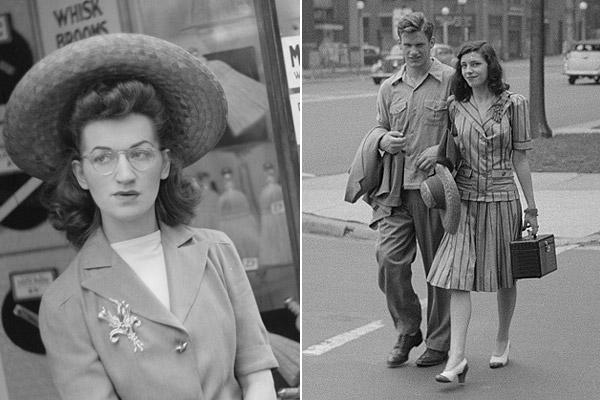
John Vachon was a Minnesotan, a graduate of St. Thomas College in St. Paul who moved to D.C. during the end of the Great Depression with dreams of becoming a writer. What he became was a file clerk; actually, it started a bit worse than that:
Well, in 1936 I was looking for a job in Washington. I had been looking for a job for about four or five months. I had been at graduate school at Catholic University until the first of the year. The first job opening that came along through those patronage channels in those days . . . I remember the title of the job was "Messenger," but the duties Roy explained to me that day, telling me that they were going to be very dull, would be to write captions on the back of 8 x l0 photographs, the captions being on file cards which I would copy. So I did that for a month, and occasionally would turn the picture over and look at it. And then at the end of the month I was let go, and I was again unemployed in June. I've forgotten the exact details, but about six weeks later I came back in the same position. I guess my predecessor left for good.
But Vachon had lucked into a crap job in one of the most remarkable government agencies of the Depression—the Farm Security Administration, working under Roy Stryker, the economist and photographer responsible for some of the most endearing images in American photography, through the work his photographers shot while criss-crossing the country during the Depression.
Stryker's photographers included geniuses like Walker Evans, Dorothea Lange, and Ben Shahn. John Vachon was not a genius; he started for the FSA's Resettlement Agency with no idea what it did and no interest in photography. But the daily exposure to the FSA archives gave him an appreciation for the form: "Well, within a few months I got interested in the pictures themselves, and began to know one photographer's work from the other, and admire certain pictures. It was in the spring of the next year, '37, when I asked Stryker if I could use a camera just to see what I could do with it, which I had never in my life done or wanted to do." Access to Stryker and his incredible team made the learning curve a lot easier for Vachon.
He learned on the job, in concert with county agents who helped him gain access to the people he photographed, mostly rural enclaves. But in the summers of 1940 and 1941, Vachon passed through Chicago, where he put his abilities as a street portraitist across a broad range of people, capturing the elegance and poverty of the central city during wartime.
All Photographs: John Vachon/FSA


